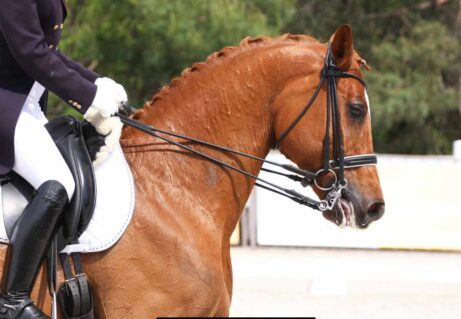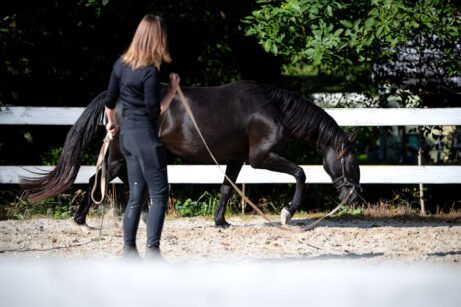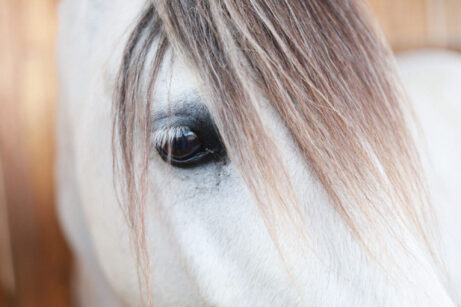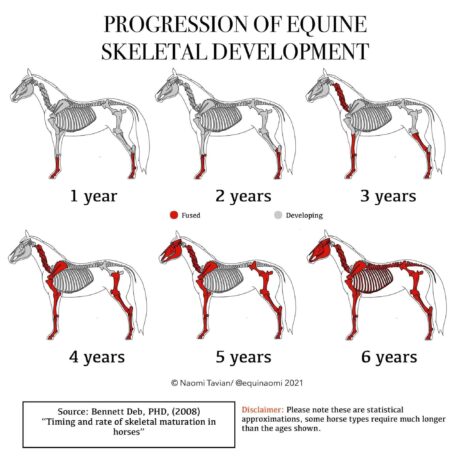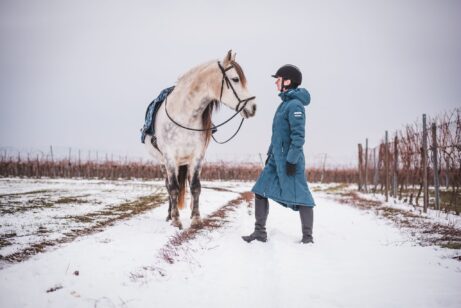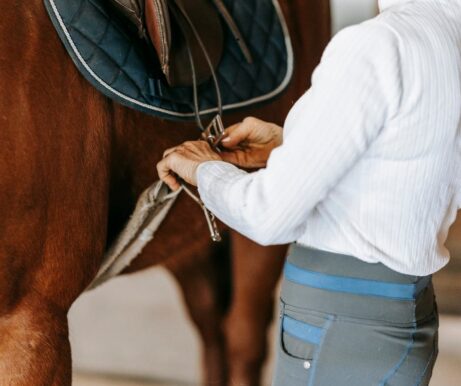Learned Helplessness
Learned helplessness is a psychological state in which an individual learns through experience that they have no control over unpleasant or painful stimuli, and that their every effort to avoid them is futile. They become helpless.
The term "learned helplessness" was defined in the 1960s based on experiments with dogs. These experiments revealed that a creature who succumbs to learned helplessness loses the ability to respond normally to painful stimuli (they stop trying to avoid them) and their learning capacity is also severely impaired. Often, their resignation reaches such a degree that they endure unpleasant stimuli even when it would be possible to escape the situation. In laboratory animals in a state of learned helplessness, associated health problems (such as stomach ulcers or weight loss) were also observed.
Traditional training methods for horses are based on the rider's dominance over the horse, and also involve the application of negative reinforcement, where we work with pressure that subsides only when the horse completes the task. Success is considered to be when the rider gains control over the horse and the horse loses control over their own behavior. Training methods in which the horse is intentionally restricted in movement (for example, by tying their head or limbs) declare the horse "rideable" at the moment when they stop resisting and fall into a state of learned helplessness.
Based on scientific studies, it appears highly likely that horses exhibit signs of learned helplessness - including reduced motivation, anhedonia (inability to experience positive emotions), and cognitive deficits (impaired mental functions) - if they are repeatedly and without the possibility of escape, exposed to negative experiences in training and management.
(Hall C, Goodwin D, Heleski C, Randle H, Waran N, 2008)
What Happens in the Brain
It's logical that a horse will stop trying to find solutions when all previous attempts to avoid pain have failed.
However, in the case of learned helplessness, it's not just a mental and emotional reaction, but there are also changes in brain activity. This is related to the release of the neurotransmitter dopamine, which scientists associate with feelings of reward or motivation. Increased dopamine production occurs in various areas of the brain along with relief, reward, or pleasure. Stress also causes the release of dopamine, which motivates the individual to find a way to alleviate this stress.
When an animal discovers that it cannot predict or control a situation, a state of learned helplessness can occur, in which the release of stress-induced dopamine, which would motivate the animal to solve the problem, is halted.
Usual Causes of Learned Helplessness
Restraint
A very effective method for inducing a state of learned helplessness is to restrict the animal's movement. This includes practices such as tying a horse's leg under their belly, binding their legs together, or tying their head to their tail. It also includes devices like a "gag bit", which cause the horse such severe pain that they are forced to stand and endure another unpleasant stimulus. Paradoxically, these devices are sometimes described as "calming."
Among the means that help to gain maximum control over a horse and can cause learned helplessness are fairly common training aids such as draw reins, side reins, and certain longing equipment, which force the horse to move in a certain position without the possibility of change or escape. However, this state can be achieved even without the appropriate equipment. A very popular method for gaining control over a horse under saddle is hyperflexion, or rollkur or LDR.
Inappropriate Use of Bits and Bridles
A bit that rests in the sensitive equine mouth can cause the horse significant discomfort and pain. If a horse is ridden under constant pressure on the reins, it affects them physically, but also mentally. The same applies to ill-fitting or intentionally restrictive use of bridles. To gain control over the horse, devices such as tightly fastened nose bands, flashes, or chin straps are used.
Inconsistent Training Methods and Conflicting Aids
The application of conflicting aids, such as using restraint with the hands while simultaneously cueing the horse to move forward, is another major stressor. The horse finds no logic in the signals, they are unpredictable, constantly changing, and they cannot find a solution. Since they cannot resolve the situation, they surrender to it, "shut down." This applies to inconsistent training methods where there are no clear rules, and the rider only motivates the horse through punishment, without the possibility of finding a strategy to consistently and satisfactorily complete the task.
Horse Management
Lack of free movement and isolation are extremely frustrating for the gregarious, steppe-dwelling animal that the horse naturally is. Management mistakes then often manifest as so-called vices - cribbing, weaving, chewing on anything, or self-harm. Other horses react to isolation and confinement in stalls with depression, lethargy, and apathy. Vices, as we know them in stabled horses, do not occur in horses living in freedom (semi-wild or feral/wild).
Another crucial stress factor with a major impact on the horse's later life is too early and inappropriate weaning of the foal.

How to Recognize Learned Helplessness
Learned helplessness manifests itself usually in three behavioral areas: motivational, cognitive, and emotional. Learned helpless horses do not tend to avoid unpleasant stimuli, do not try to escape or flee, are not motivated to any reaction or response. They are unable to connect their behavior to a predictable consequence. They fall into depression, anxiety, are passive, demotivated, apathetic. Paradoxically, this behavior is considered desirable, because the horse appears "good", easily manageable, manipulable, and does not resist.
These are exactly the horses that are eagerly provided to beginners for riding, because they are "calm", "lazy" and reliable.
At the physical level, the deep impacts of this psychological trauma can manifest in the form of digestive problems, stomach ulcers, weight loss, greater susceptibility to colic, or generally more frequent health problems.
Learned helpless horses often display a resigned attitude with a lowered head and relaxed ear position. Due to this passive coping strategy, these horses also exhibit lower heart activity (lower blood pressure and pulse).
However, learned helplessness should not be confused with desensitization, i.e., getting used to problematic stimuli, or with the reduced reactivity of the horse to aids caused by too much pressure from the rider.
Preventing Learned Helplessness
Based on the assumption that learned helplessness stems from a sense of loss of control, the best prevention is to give the horse at least some control over their own life. Ideally, for example, allow the horse to live in an open, sufficiently large paddock with a group of horses and a shelter or stall, where they can choose whether to be inside or out. Unfortunately, this is not always possible, so we should offer the horse a choice whenever possible, even if it's just small things. Unrestricted, 24/7 access to hay/pasture and water is an absolute necessity. It is also appropriate to use enrichment elements and provide the horses with new learning and exploration stimuli.
Emphasis should also be placed on the method of raising foals, especially the method and timing of weaning and subsequent integration into the herd.
Of course, it is important to constantly monitor whether the horse is not showing signs of pain or discomfort, whether due to the bit, bridle, saddle, physiological problems, or training methods. Ideally, training methods using negative reinforcement should be replaced by those working with positive motivation.
Sources:
The Slippery Slope to Learned Helplessness in Horses: https://thehorse.com/179955/the-slippery-slope-to-learned-helplessness-in-horses/
Hall C, Goodwin D, Heleski C, Randle H, Waran N. Is there evidence of learned helplessness in horses? J Appl Anim Welf Sci. 2008;11(3):249-66. doi: 10.1080/10888700802101130. PMID: 18569222.
Read more

